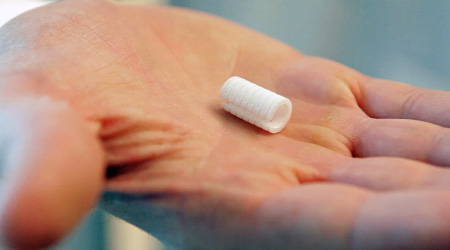3D-Printed Tracheal Implant Saves Baby's Life

In a case featured in New England Journal of Medicine, two doctors at the University of Michigan used a custom created 3D implant which was inserted into the trachea of a 20 month old patient to save his life. The implant keeps the airway open, preventing collapse and allowing normal breathing without the assistance of a ventilator.
Kaiba Gionfriddo, suffered from tracheobronchomalacia. The condition is characterized by a collapsing of the airway, the bronchus, leading to the lungs. It is often misdiagnosed as asthma which doesn't respond to treatment due to it being a structural defect. Most children grow out of it by the age of 2 or 3 but Kaiba's case was quite severe which resulted in daily resuscitation. Prior to the implant, the outlook was dire even with the best currently available treatments.
Dr. Glenn Green, MD, associate professor of pediatric otolarygololgy and Dr. Scott Hollister, Ph.D., a professor of biomedical engineering, both from the University of Michigan, created and implanted the tracheal splint which was made from a biopolymer called polycaprolactone. The technique had been used previously to create implants for ear and nose structures on a pre-clinical trial basis. This procedure required emergency Food and Drug Administration approval prior to the operation.
In a release by the University of Michigan, Hollister stated, "The material we used is a nice choice for this. It takes about two to three years for the trachea to remodel and grow into a healthy state, and that's about how long this material will take to dissolve into the body."







